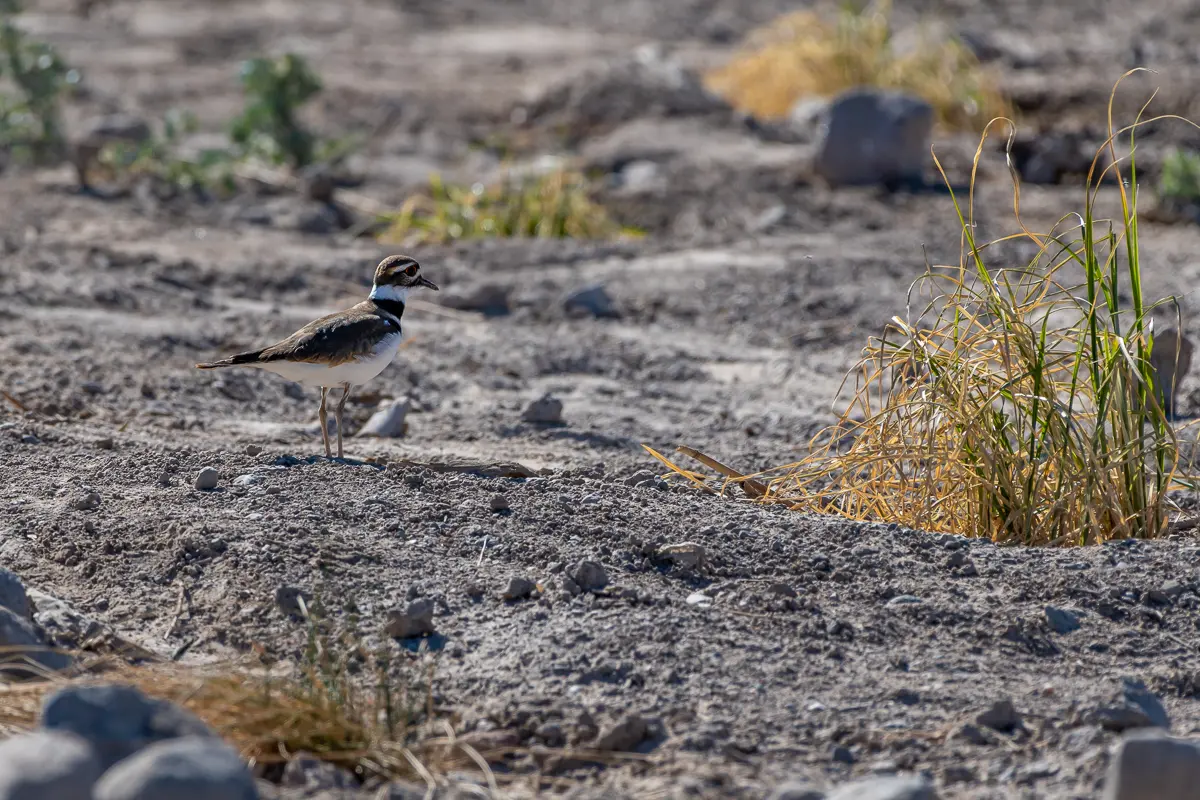The Killdeer

WHAT WETLANDS PARK BIRD ID’S ITSELF BY NAME, OFTEN WHILE FLYING IN MIDAIR?
“Kill-DEER…kill-DEER… kill-DEER!!!” Perhaps you’ve heard a far-reaching bird cry that sounds very much like that? In a naming convention like that of the chickadee (Poecile gambeli), whose family is named for the “chick-a-dee” call it makes, the common name for the killdeer (Charadrius vociferus) comes from its call. Killdeer make this high, repetitive call when they are flying above. Should there be any cause for alarm? Generally no; these vocal birds are often just communicating with other birds.
Killdeer are considered shorebirds that you can spot throughout our landlocked part of southeastern Nevada. In Clark County Wetlands Park, you can spot them virtually anywhere, even in parking lots, the rooftops of the Nature Center, and other outbuildings though they like being close to Park ponds, streams, and the Las Vegas Wash.
The relatively slender, generally tawny and white-colored birds are from the plover family. They have long wings, moderately long legs, short necks, and straight bills that are shorter than their heads. Adults have two distinctive black breast bands that you can easily spot with the naked eye when they are on the ground, though in the air they may resemble an American kestrel. They are strong swimmers; even baby chicks can swim across streams!
Male and female killdeer are monogamous for a year or so and follow a curious mating/nesting ritual. The pair pick out a nesting site through a ritual known as a scrape ceremony. First, the male lowers his breast to the ground and scrapes a shallow depression with his feet. The female then approaches with her head lowered and takes his place. The male then stands with his body tilted slightly forward and his tail raised and spread, calling excitedly. Mating often follows. In a move likely to help confuse predators, the pair may make several scrapes not far away from each other before choosing one to lay in. The nest is a shallow depression scratched into the bare ground, typically 3-3.5 inches across. After egg-laying begins, Killdeer often add rocks, bits of shell, sticks, and trash to the nest. Also curious is that these items tend to be light colored.
The birds can be seen in dry, flat landscapes, running and halting on the ground in search of insects and worms. When a killdeer stops to look at an intruder, it has a habit of bobbing up and down. Near the nest, Killdeer distract predators by calling loudly, bobbing, and running away. They are considered are some of the best-known practitioners of the “broken-wing display,” feigning injury an attempt to lure predators away from their nest.
Keep an eye – and ear – out for the Killdeer while walking the trails in the Park. You may be in for a treat!
– By Constance Carlson; photo by David Walker
Please enjoy these YouTube videos:
A Killdeer Bird and her broken wing act – Kildeer Call
10 Amazing Facts About Killdeers
Killdeer Running
